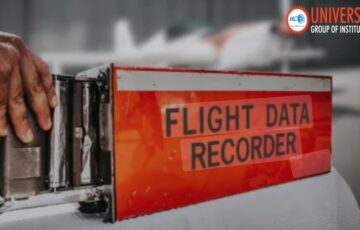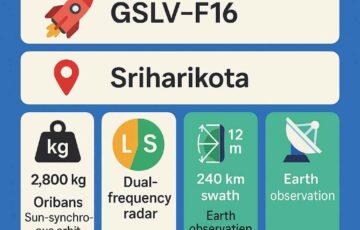Solar Orbiter Makes History: First-Ever Images of the Sun’s Mysterious South Pole Revealed
Solar Orbiter Makes History: First-Ever Images of the Sun’s Mysterious South Pole Revealed
In a landmark achievement for solar science, the European Space Agency (ESA), in collaboration with NASA, unveiled the first-ever images of the Sun’s south pole in June 2025. These images, captured during the Solar Orbiter’s groundbreaking flight, mark a revolutionary step toward understanding our star’s complex magnetic behavior and could significantly improve space weather prediction. The live news event showcasing these images drew global attention, rivaling the interest of a “cnn live” broadcast or “india today news live” coverage, highlighting the mission’s importance for both scientific and practical applications, including aviation safety and long-distance flights such as the india to los angeles flight route or the increasingly popular india to london flight. Aviation experts and enthusiasts alike monitored the event on flight radar 24 live, recognizing its potential impact on future air travel safety, with some even tracking specific flights like Air India’s flight AI171 using the air india flight tracker live map.
Why the Sun’s Poles Matter
Despite being the heart of our solar system, the Sun remains a largely mysterious entity—especially when it comes to its polar regions. While we’ve studied solar flares and sunspots for decades, the poles have long remained out of reach, hidden by the geometry of most spacecraft orbits. Yet, these very regions are crucial for understanding the solar magnetic cycle, which affects everything from satellite operations to air crash casualties on Earth by influencing space weather conditions.
The Sun undergoes a magnetic flip every 11 years, where its north and south magnetic poles swap places. This process begins deep within the solar interior but plays out visibly at the poles. Without a clear view of these zones, scientists have struggled to model this cycle with precision, impacting our ability to predict and prepare for solar events that could affect aviation industry safety and potentially lead to emergency situations akin to an Air India crash in terms of technological disruption. In extreme cases, these events might even necessitate emergency landing procedures for aircraft in flight, putting passenger safety at risk and potentially resulting in incidents where there might only be a sole survivor.
How Did Solar Orbiter Do It?
Launched in 2020, ESA’s Solar Orbiter has been gradually adjusting its orbit using gravitational assists from Venus. In March 2025, it achieved an orbital tilt of approximately 17 degrees below the Sun’s equator—enough to peer directly at the south pole for the first time in history. This complex flight maneuver required precise calculations and execution, showcasing the advanced flight procedures developed for space exploration, which rival the complexity of pilot training for advanced aircraft like the Boeing 787-8 Dreamliner, a collaboration between boeing india and international partners. The mission’s success is a testament to human ingenuity, reminiscent of the pioneering spirit that led to the establishment of the first airport in India, now visible on any ahmedabad in india map.
Armed with a sophisticated suite of instruments, Solar Orbiter began its polar campaign:
- PHI (Polarimetric and Helioseismic Imager): Captured high-resolution images of the Sun’s visible surface and its magnetic field, akin to an “accident photo” of solar activity.
- EUI (Extreme Ultraviolet Imager): Observed the hot outer atmosphere or corona.
- SPICE (Spectral Imaging of the Coronal Environment): Provided detailed spectroscopic data on elements in the solar atmosphere, tracking temperature and flow dynamics.
These tools worked in concert to produce a stunningly detailed and multidimensional view of the Sun’s south pole, acting as a collective “black box aviation” system for solar data, much like the cockpit voice recorder and flight data recorder used to record crucial information on aircraft. The data collected could prove as vital for understanding solar phenomena as crash site forensics are for improving aviation safety and preventing incidents like an Air India crash.
What Did We Discover?
1. A Chaotic Magnetic Landscape
One of the most striking revelations from PHI was the disordered magnetic field at the Sun’s pole. Instead of neat lines and well-defined poles, scientists saw a jumbled mix of magnetic polarities—a clear sign that the Sun is approaching solar maximum, the peak of its 11-year activity cycle. This supports existing models of the solar dynamo but also introduces new questions about how order re-emerges from magnetic chaos.
2. Origins of the Solar Wind
Data from SPICE revealed high-speed jets of plasma escaping the pole, offering key insights into the origin of the solar wind. This continuous stream of charged particles shapes the heliosphere and can trigger geomagnetic storms on Earth. By observing how this wind forms and accelerates at the poles, researchers are gaining vital information for forecasting space weather events that could impact takeoff accident prevention and communications, potentially causing disruptions as severe as a plane crash scenario in terms of technological impact.
3. A Hot and Dynamic Corona
EUI captured the solar corona above the south pole in vivid ultraviolet detail. This million-degree plasma region is where solar storms originate. These new observations help scientists better understand how energy is transported from the Sun’s interior to its outer layers—a puzzle that has long stumped astrophysicists and aviation experts alike. The insights gained could be crucial for predicting and mitigating the effects of solar storms on aviation, potentially preventing incidents that might otherwise require a mayday distress call or lead to a plane crash with only a sole survivor.
The Bigger Picture: Preparing for the Future
These findings are not just academic. With society increasingly dependent on satellites, GPS, and high-frequency communication, space weather forecasting has become critical for aviation safety and overall technological resilience. The new polar data from Solar Orbiter could dramatically improve models for predicting solar flares and coronal mass ejections, which can disrupt electrical grids and communication systems, potentially leading to emergency situations in aviation, affecting flights from india to los angeles or the california to india flight time.
The flight data analysis from this mission is expected to revolutionize our understanding of solar dynamics. Much like how a flight manifest provides crucial information about aircraft passengers and cargo, the instruments aboard Solar Orbiter offer unprecedented insights into our star’s behavior. This information could be as crucial for space weather prediction as the work of the National Transportation Safety Board is for aviation safety and crash investigation.
But the journey is far from over. Solar Orbiter’s flight path will gradually tilt even more over the next few years, reaching 24 degrees by 2026 and eventually up to 33 degrees by 2029. This means even clearer and more comprehensive observations of both poles are on the horizon, promising further advancements in our solar knowledge and space weather prediction capabilities. The mission’s progress is being closely monitored by both space agencies and aviation authorities, including organizations like the Aircraft Accident Investigation Bureau and the Directorate General of Civil Aviation, to apply these solar insights to improve flight safety and operations.
Conclusion
The Solar Orbiter’s south pole imagery is not just a scientific milestone—it’s a reminder of the power of exploration and international collaboration. As we continue to probe the mysteries of our nearest star, each new discovery not only fuels curiosity but also enhances our ability to protect modern technological life on Earth, including our aviation infrastructure.
In many ways, this is just the beginning of a new era in heliophysics. And as Solar Orbiter climbs higher and our view expands, so too will our understanding of the cosmos and our ability to safeguard our technology-dependent civilization from the Sun’s more turbulent moods. This mission, combining elements of advanced aircraft design with space exploration, showcases how aviation expertise contributes to our understanding of the universe and our ability to navigate its challenges.
The collaboration between space agencies and aviation authorities will be crucial in applying these solar insights to improve flight safety and operations. As we move forward, the synergy between space exploration and aviation technology will continue to push the boundaries of what’s possible, whether it’s achieving the plane’s highest speed or ensuring safe flights from Ahmedabad airport to London Gatwick. The lessons learned from this mission could even inform international incident protocols, ensuring that we’re prepared for any eventuality, whether in the skies above Earth or in the vast expanse of space.
The maintenance procedures developed for Solar Orbiter could also have applications in aviation, potentially improving the reliability and safety of commercial aircraft. As we continue to learn from both space exploration and aviation incidents, we can work towards a future where the concept of a sole survivor from any kind of plane crash becomes a thing of the past, replaced by robust safety measures and predictive technologies.
Aviation experts are particularly interested in how the Solar Orbiter’s findings might influence the development of new aircraft capable of reaching even higher speeds. The understanding of solar wind dynamics could potentially lead to innovations in aircraft design, allowing future planes to achieve their highest speed while maintaining safety in the face of space weather challenges. Moreover, the international incident protocols developed for managing potential solar-induced disruptions could serve as a model for global aviation crisis management, further enhancing air travel safety worldwide.
Reference:
- European Space Agency (ESA) News Release, June 2025
- The Guardian – “Sun’s South Pole Revealed for First Time” (June 11, 2025)
- [The Times – “Solar Orbiter Captures First South Pole Images”]
- ESA Solar Orbiter Mission Page – www.esa.int/SolarOrbiter







